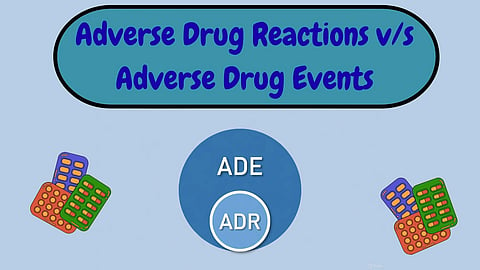While adverse drug events and adverse drug reactions are related terms, recognizing the difference between them is essential for accurate documentation, safer prescribing, and effective drug surveillance.
An ADE refers to any harm related to medication use, while an ADR specifically describes harm caused directly by the drug when used in usually prescribed normal doses. Clear understanding of this distinction supports patient safety, strengthens pharmacovigilance efforts, and promotes more informed clinical decisions.
References:
1. Bailey, C., Peddie, D., Wickham, M. E., Badke, K., Small, S. S., Doyle-Waters, M. M., Balka, E., and Hohl, C. M. (2016) Adverse drug event reporting systems: a systematic review. Br J Clin Pharmacol, 82: 17–29. doi: 10.1111/bcp.12944.
2. Ray, Sidhartha D., Joshua P. Gray, Sidney J. Stohs, and Henry Cohen. 2019. “ADRs, ADEs and SEDs: A Bird's Eye View.” In Side Effects of Drugs Annual, edited by Sidhartha D. Ray, vol. 41, xxvii–xlviii. Elsevier. https://doi.org/10.1016/S0378-6080(19)30058-3
3. Kommu S, Carter C, Whitfield P. Adverse Drug Reactions. [Updated 2024 Jan 10]. In: StatPearls [Internet]. Treasure Island (FL): StatPearls Publishing; 2025 Jan-. Available from: https://www.ncbi.nlm.nih.gov/books/NBK599521/
4. Trontell, Anne E. 2001. “How the US Food and Drug Administration Defines and Detects Adverse Drug Events.” Current Therapeutic Research 62 (9): 641–49. https://doi.org/10.1016/S0011-393X(01)80070-9
MSM


